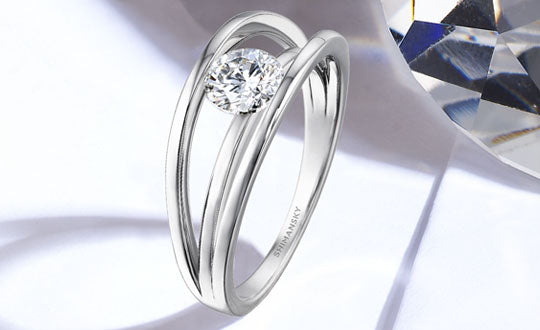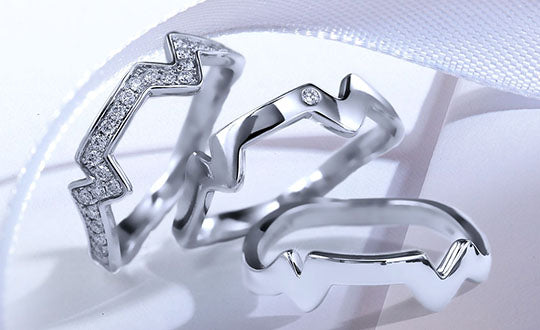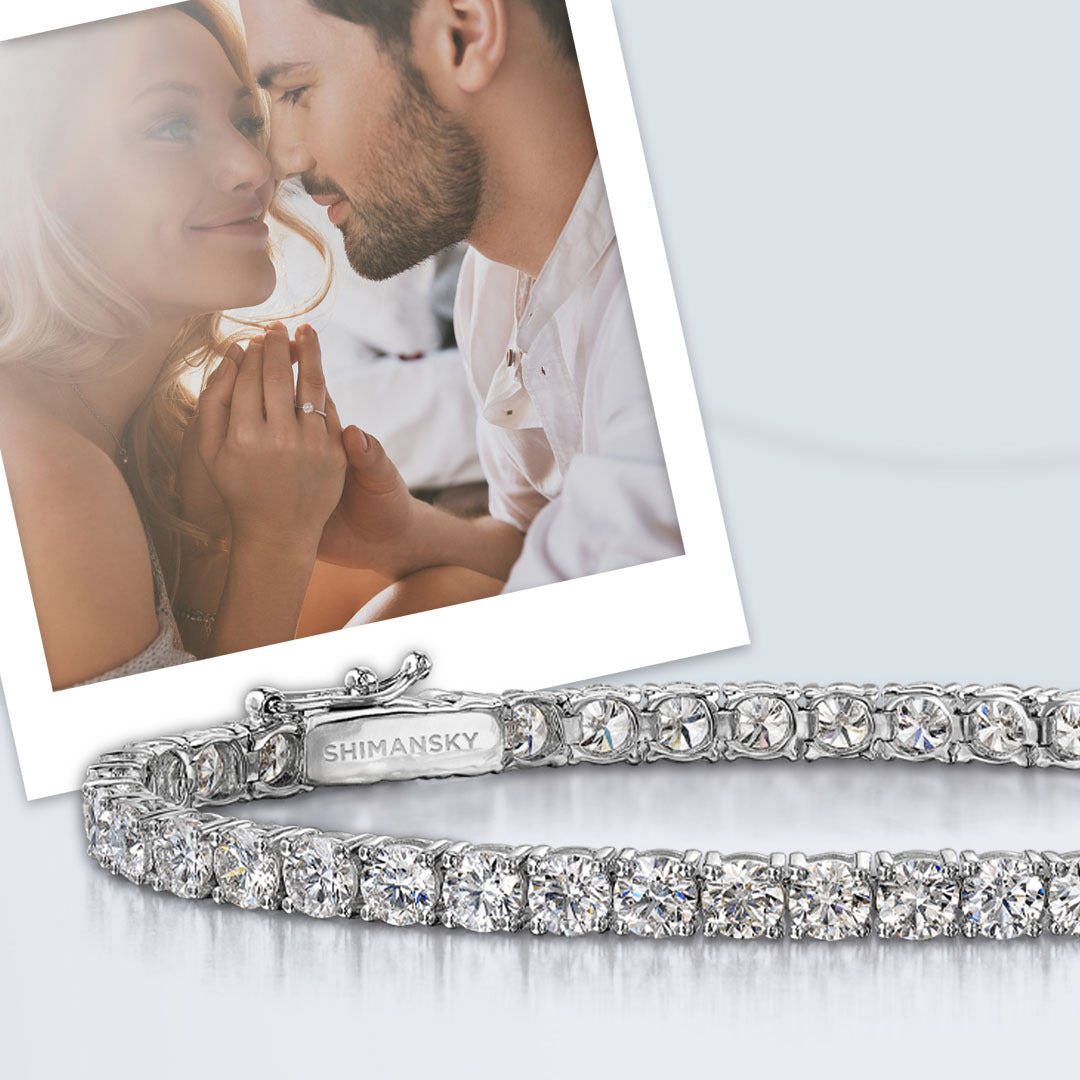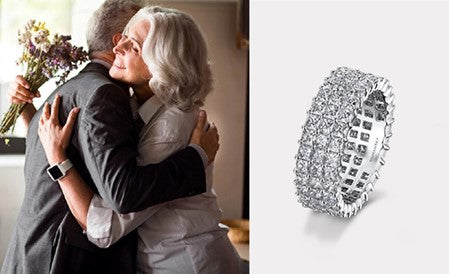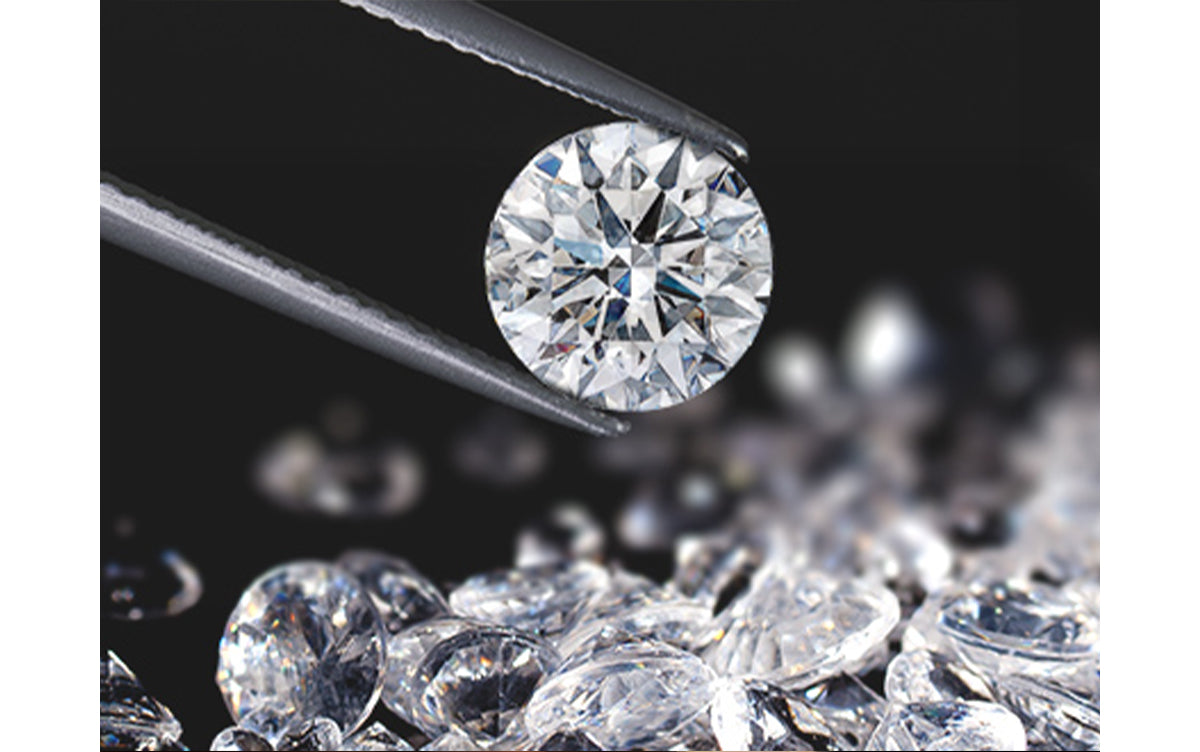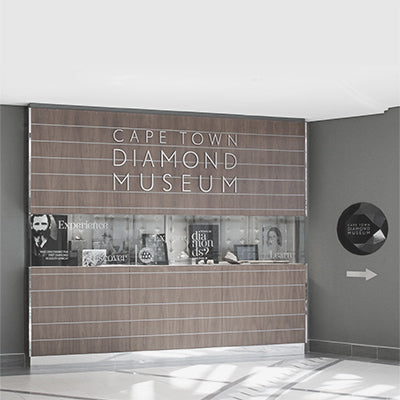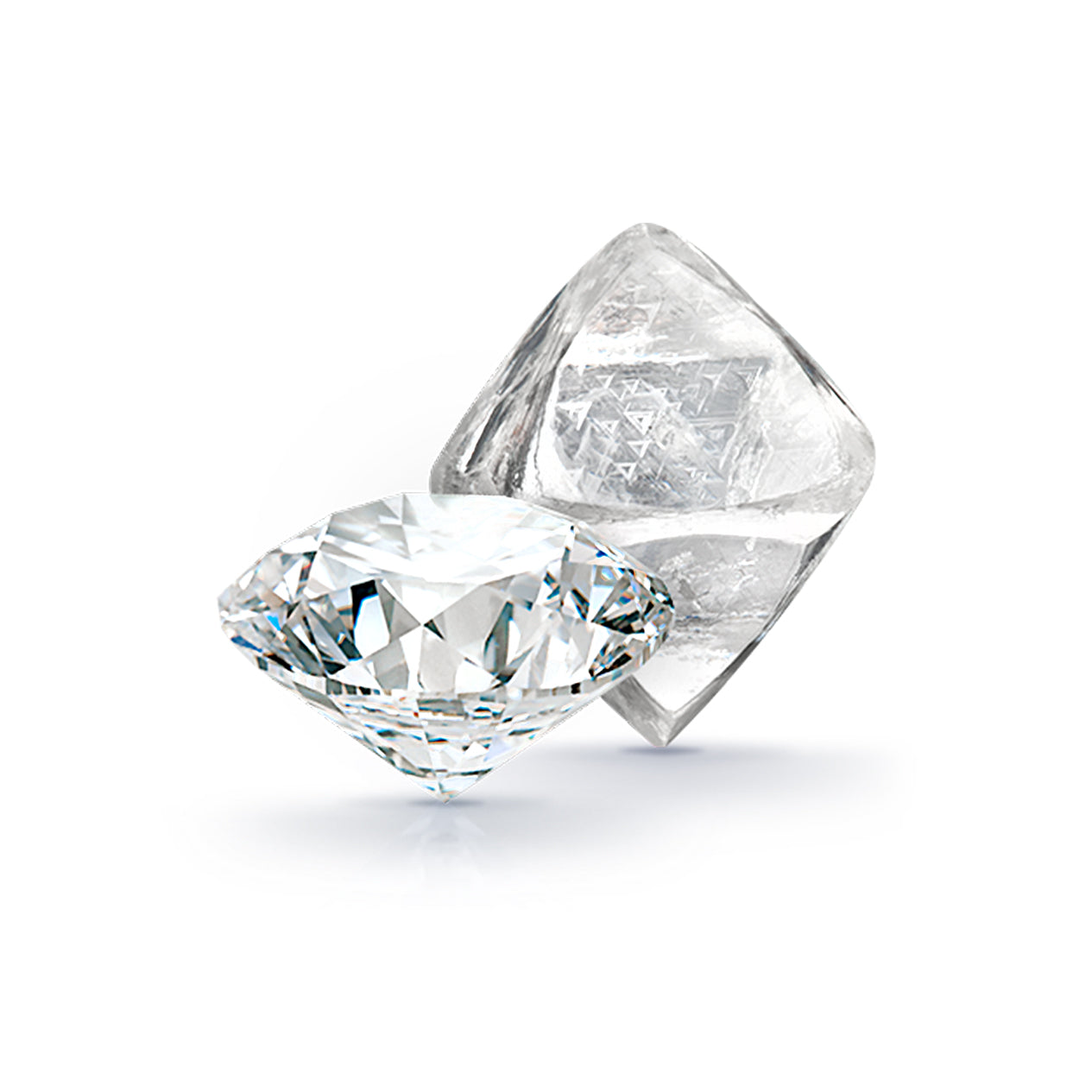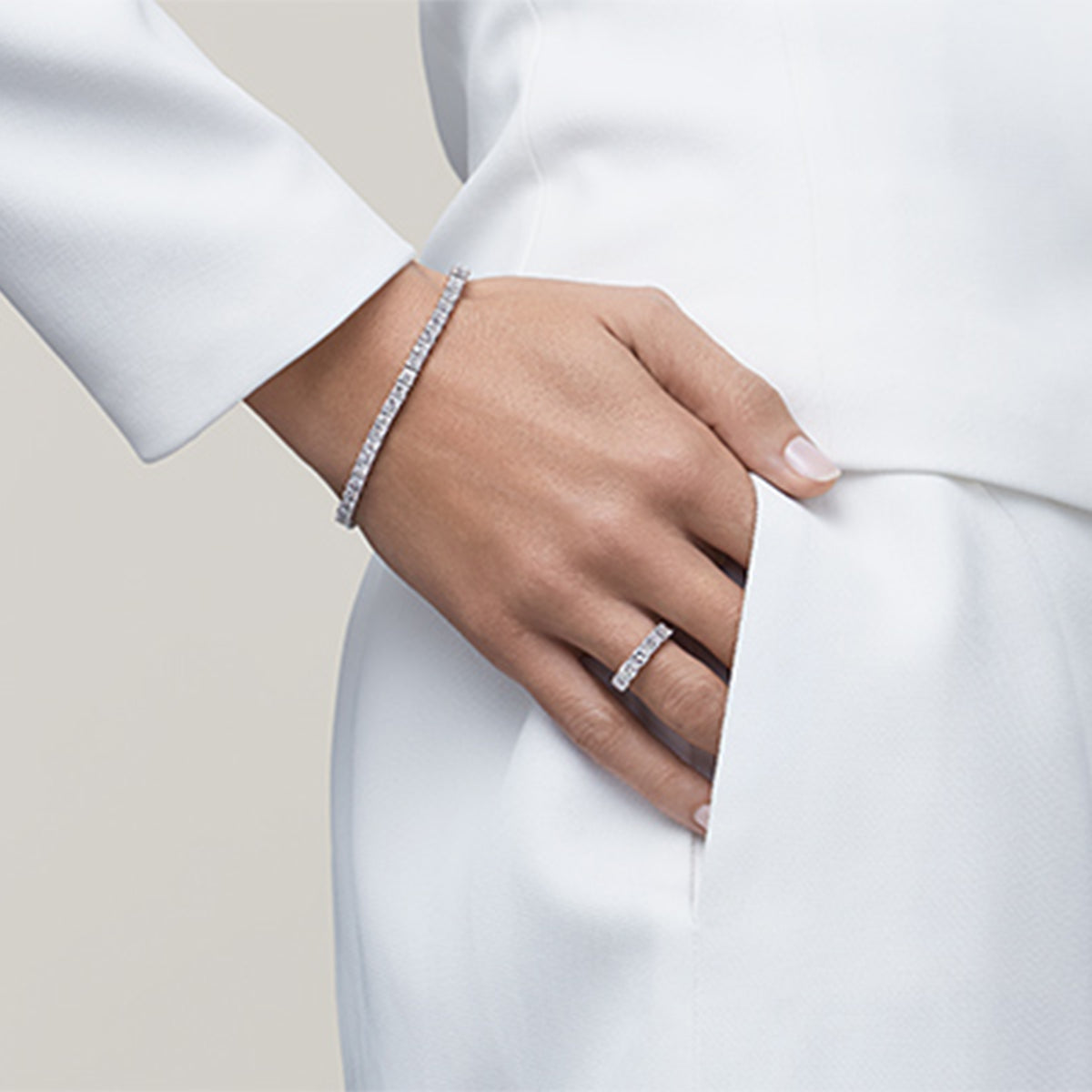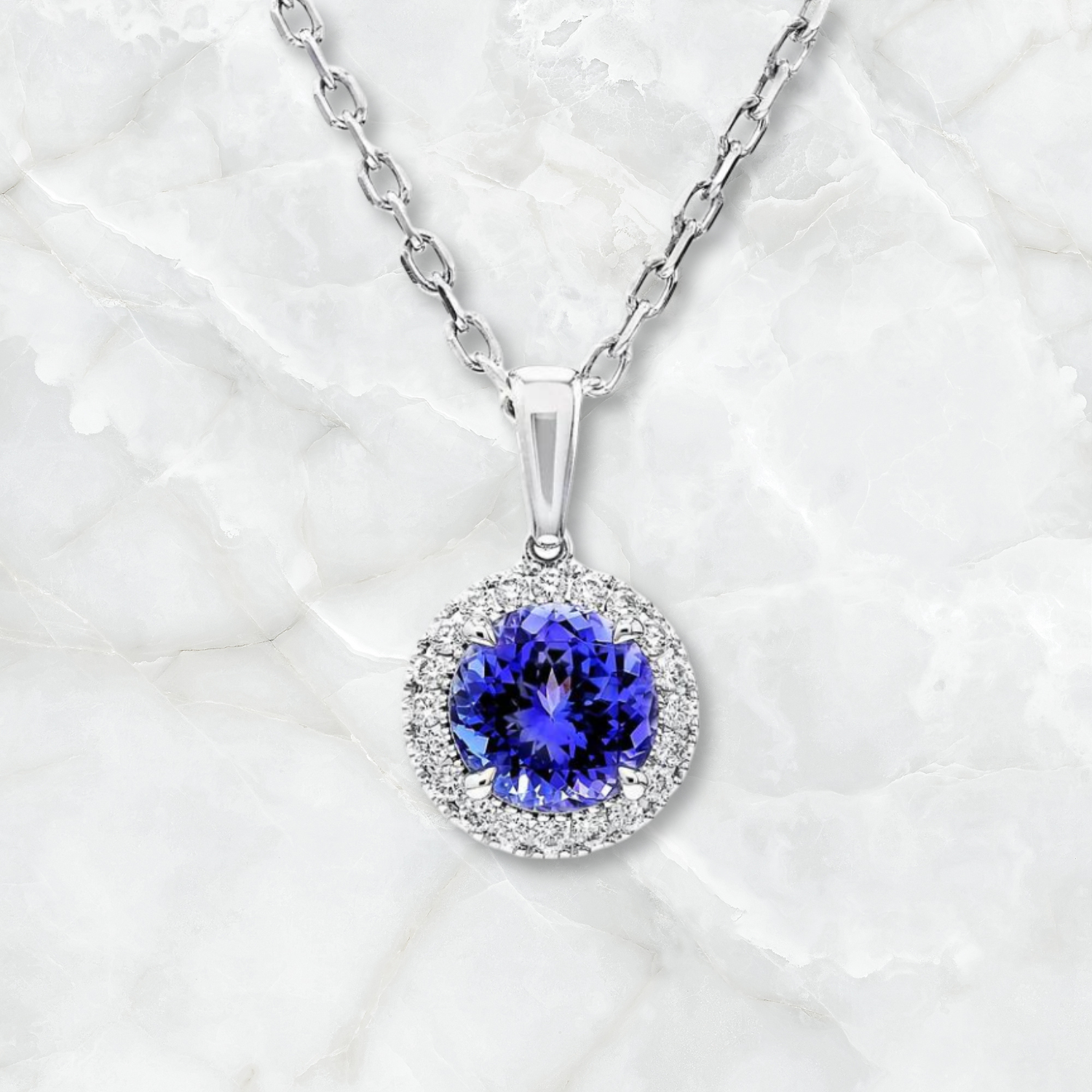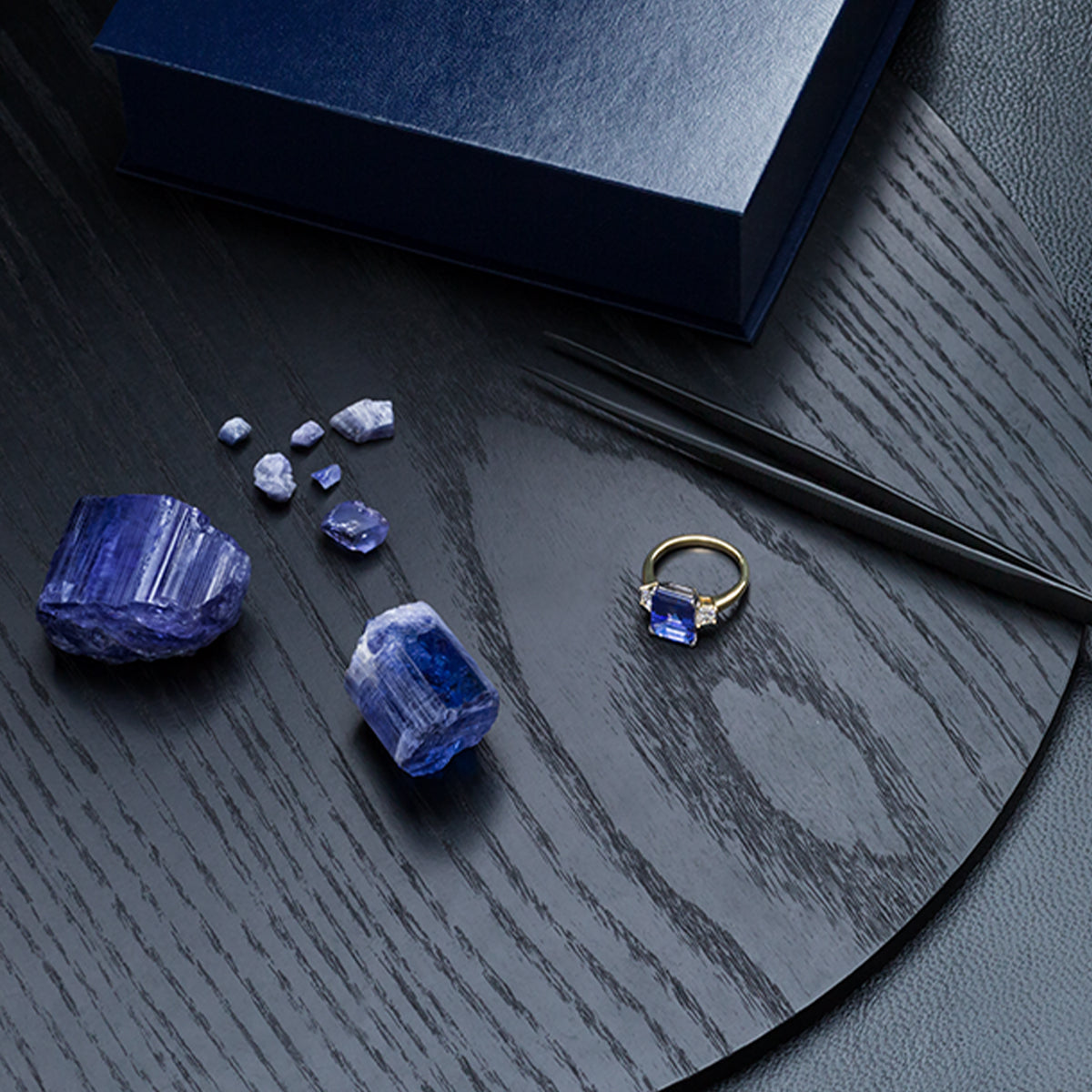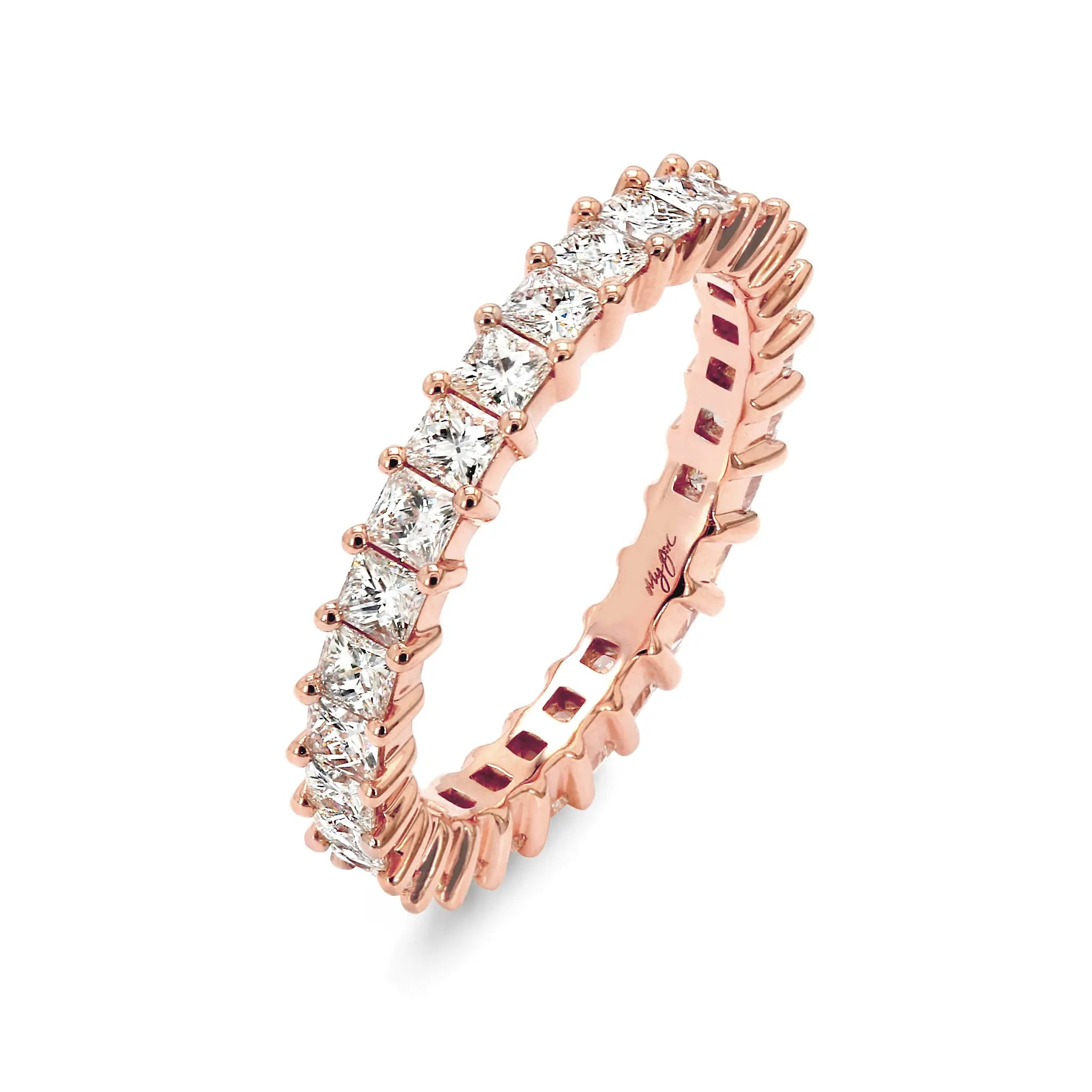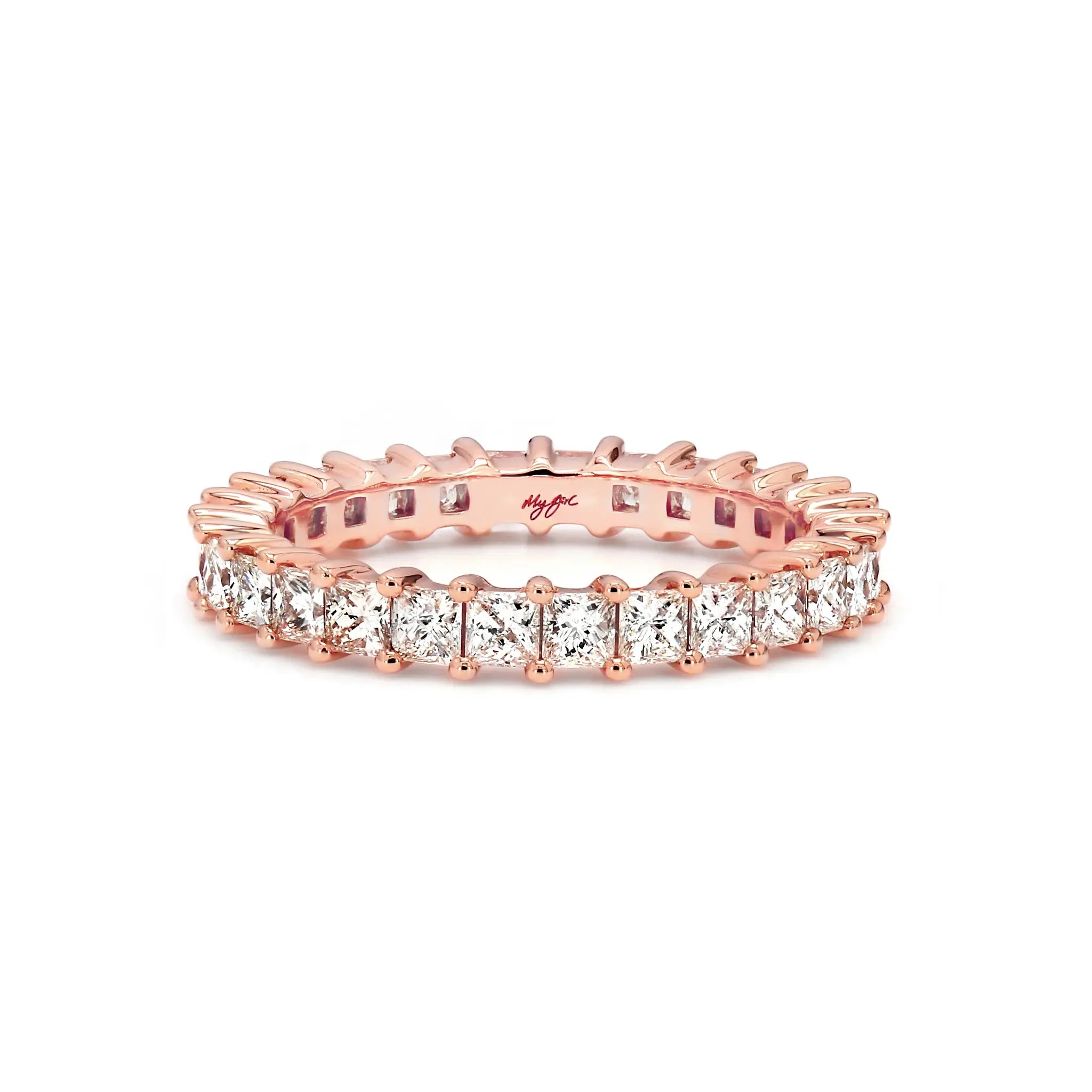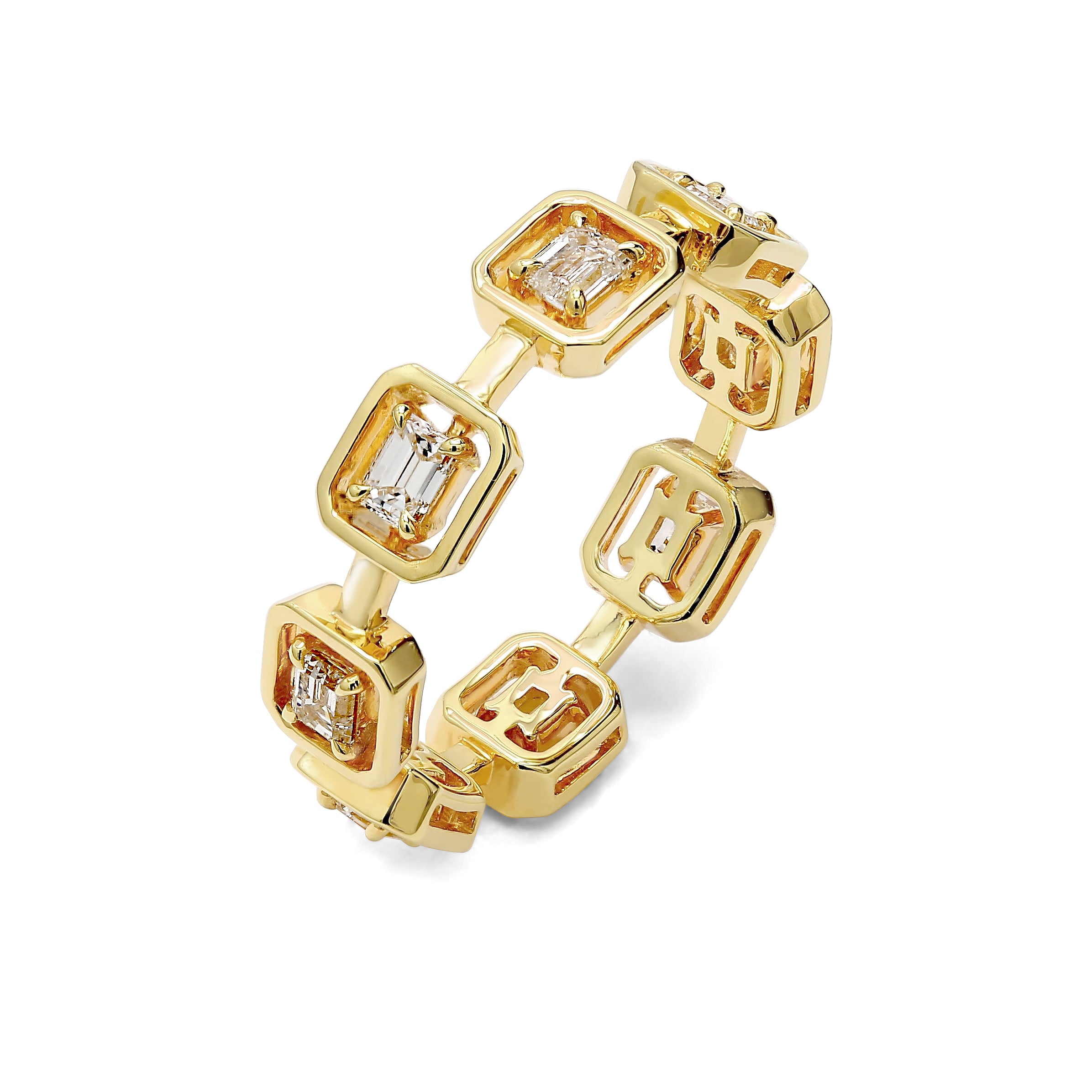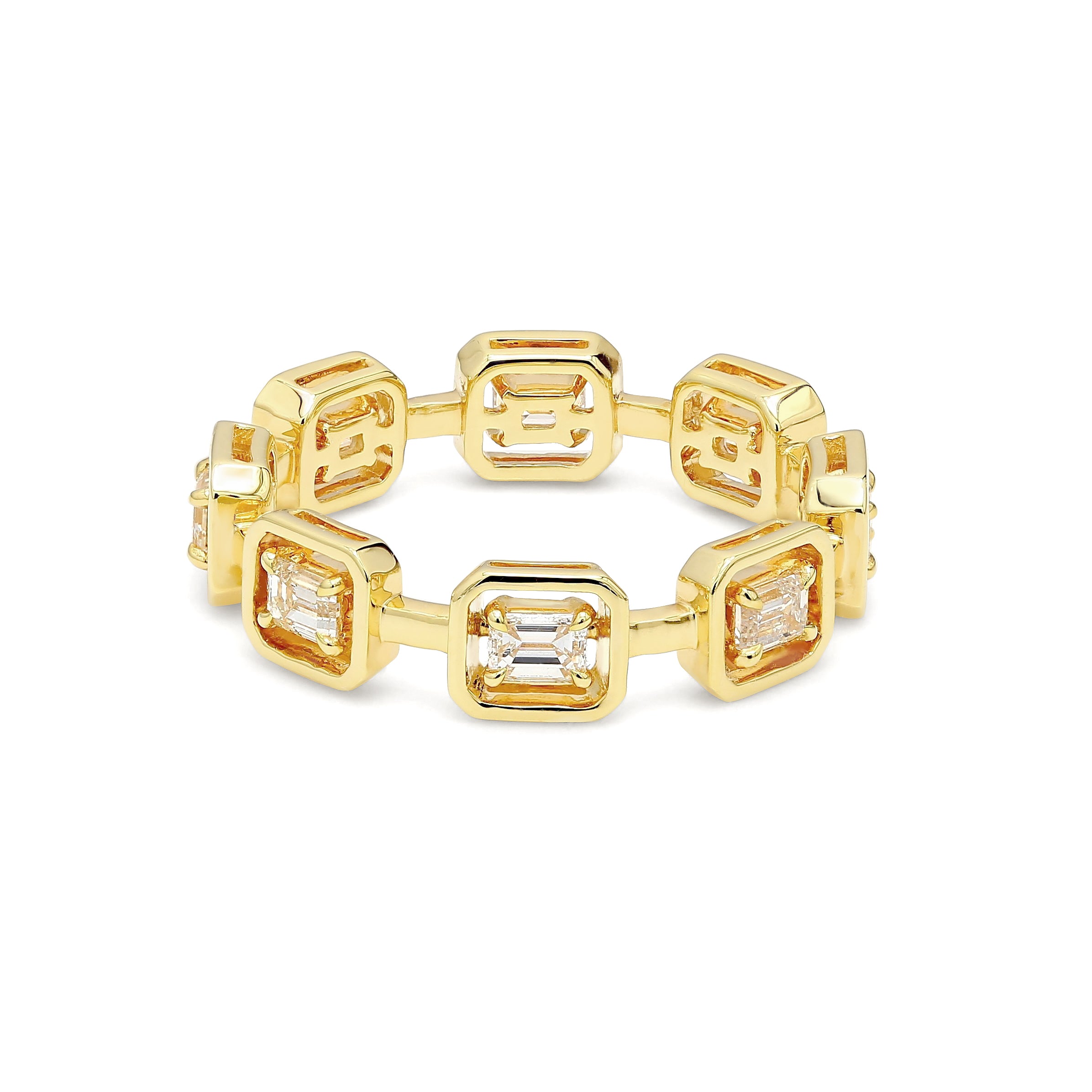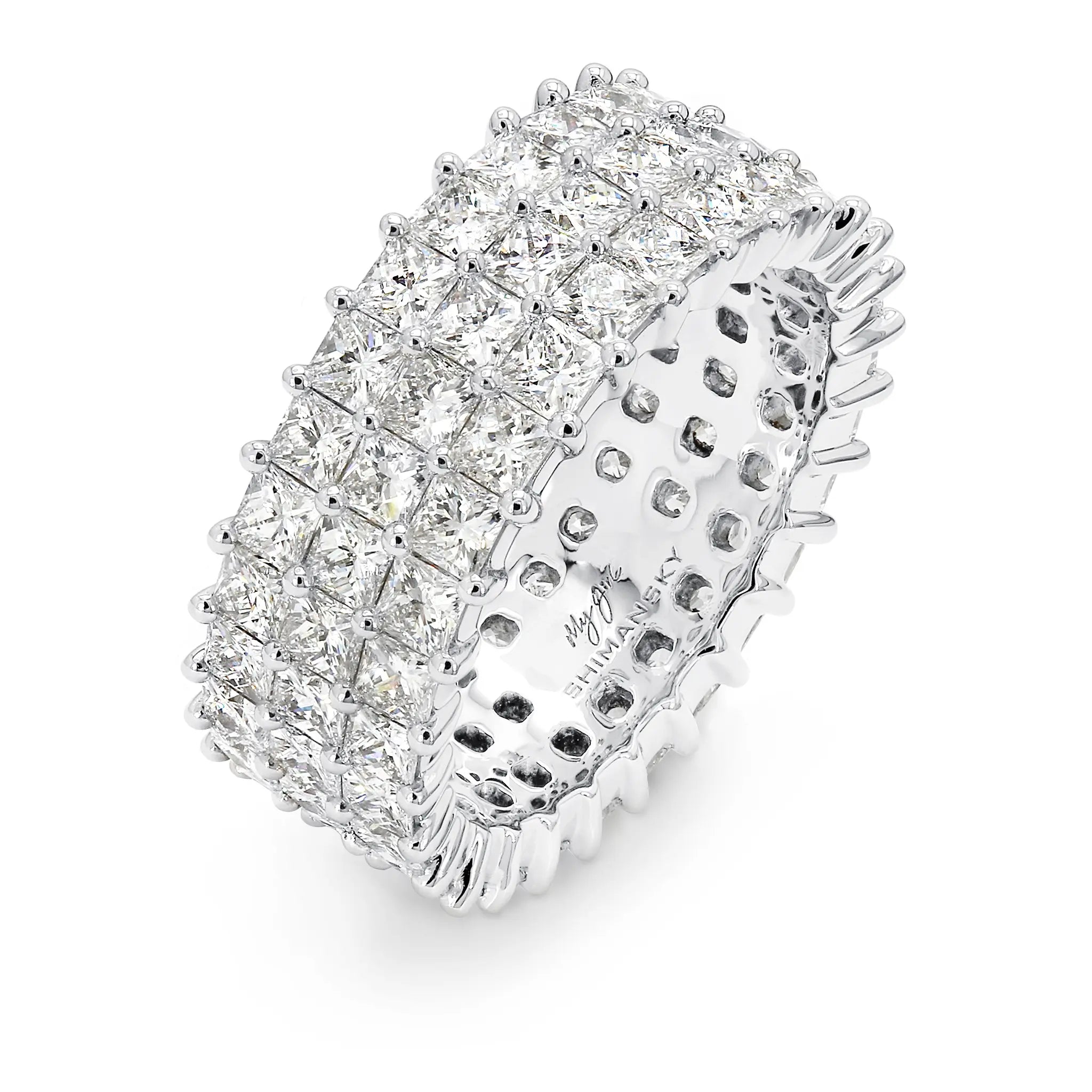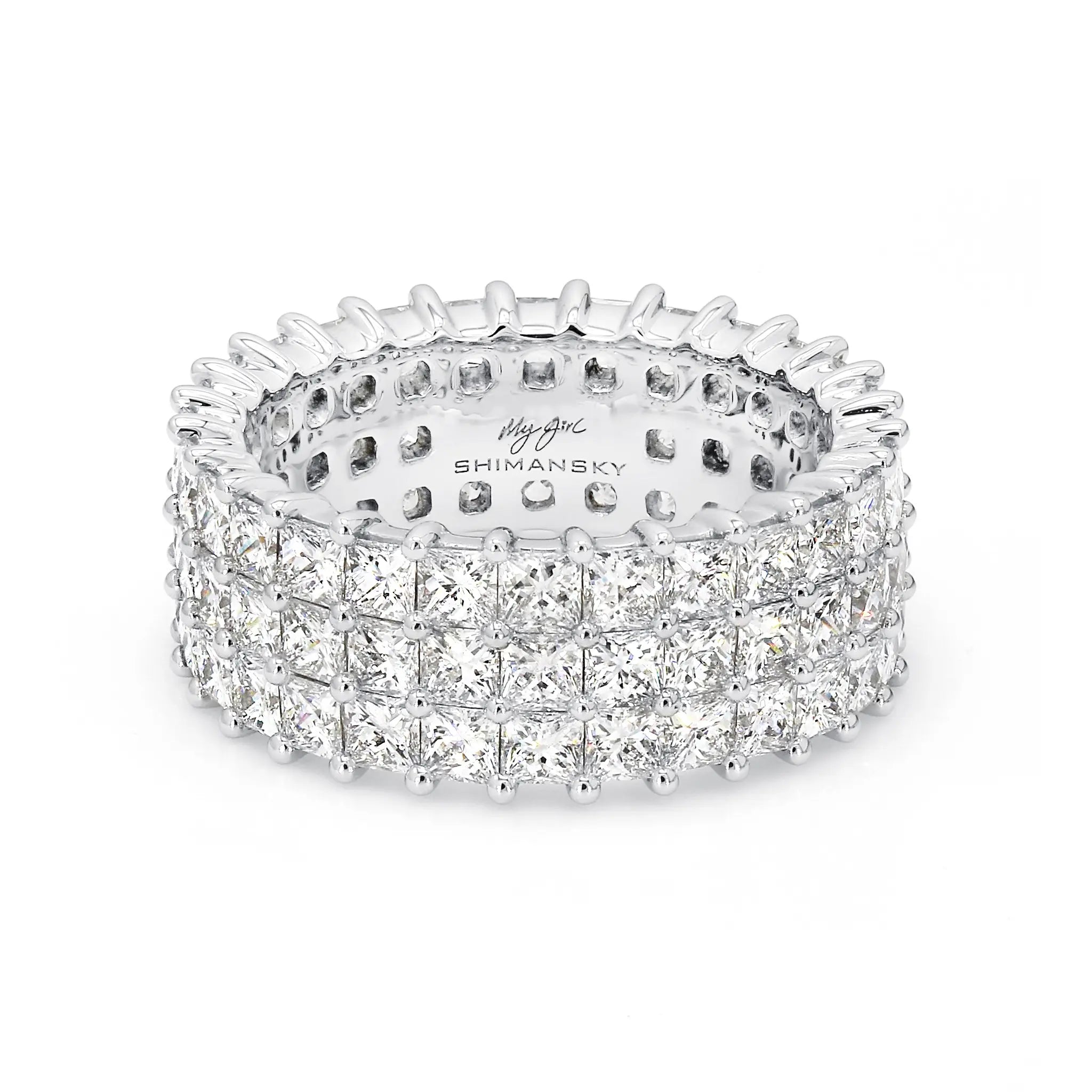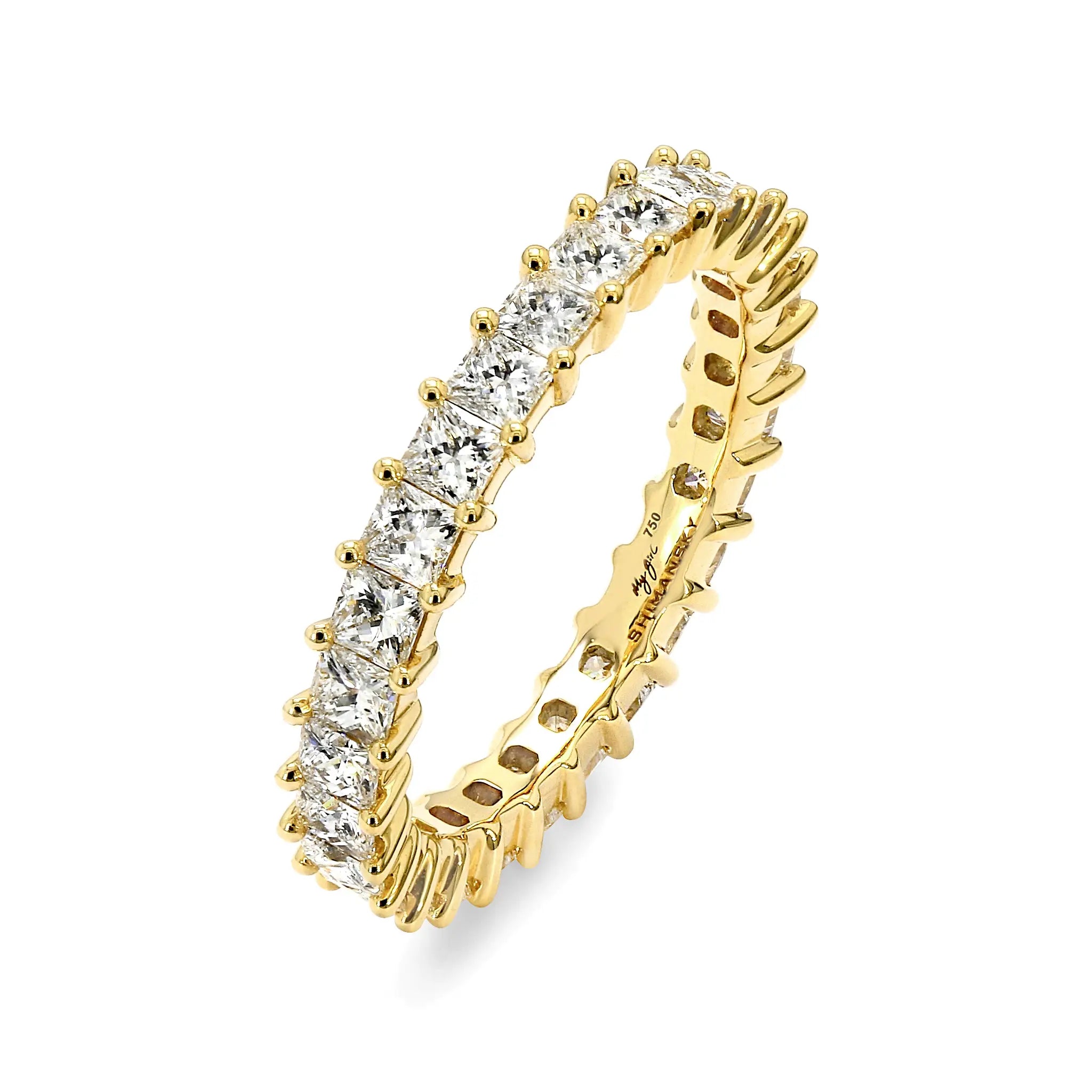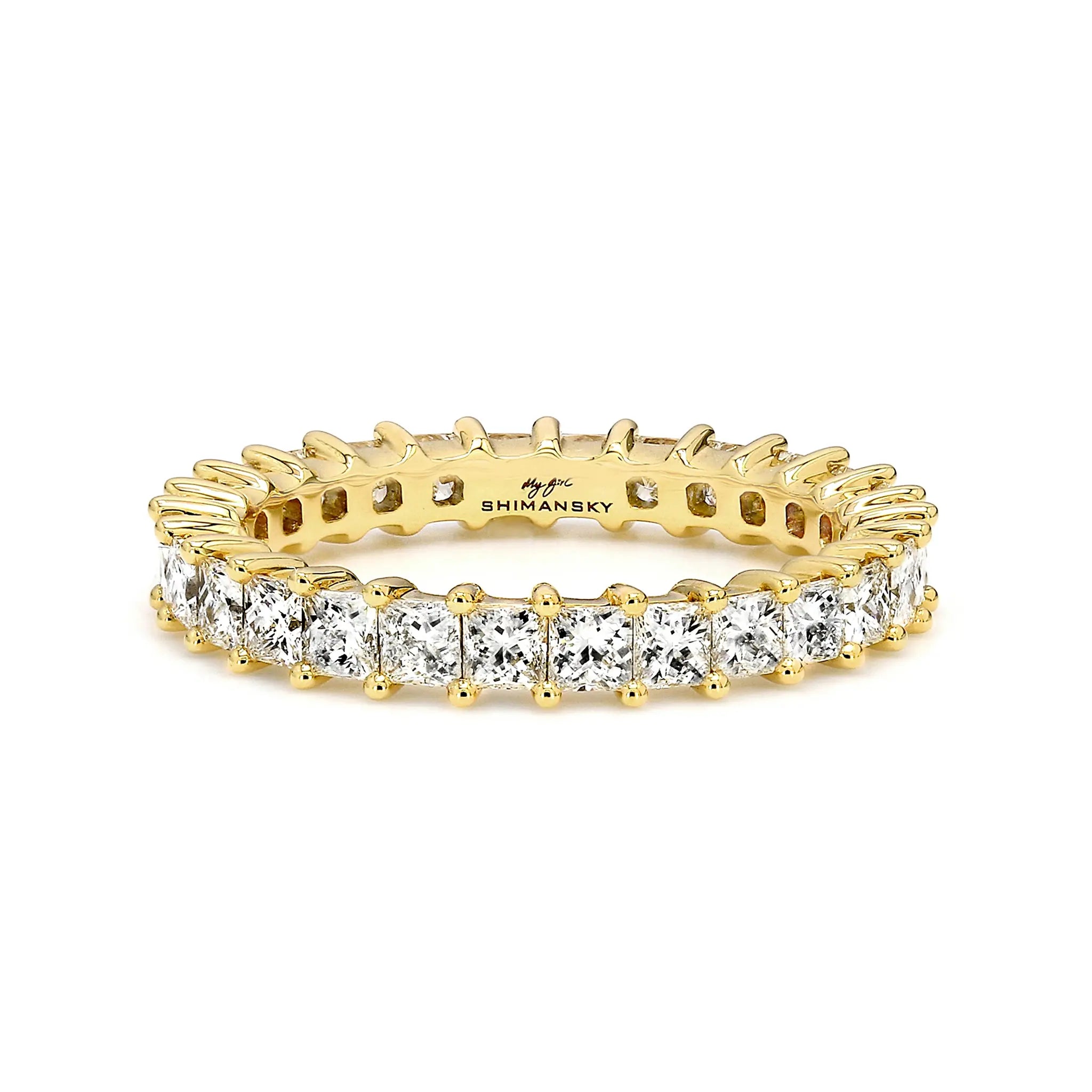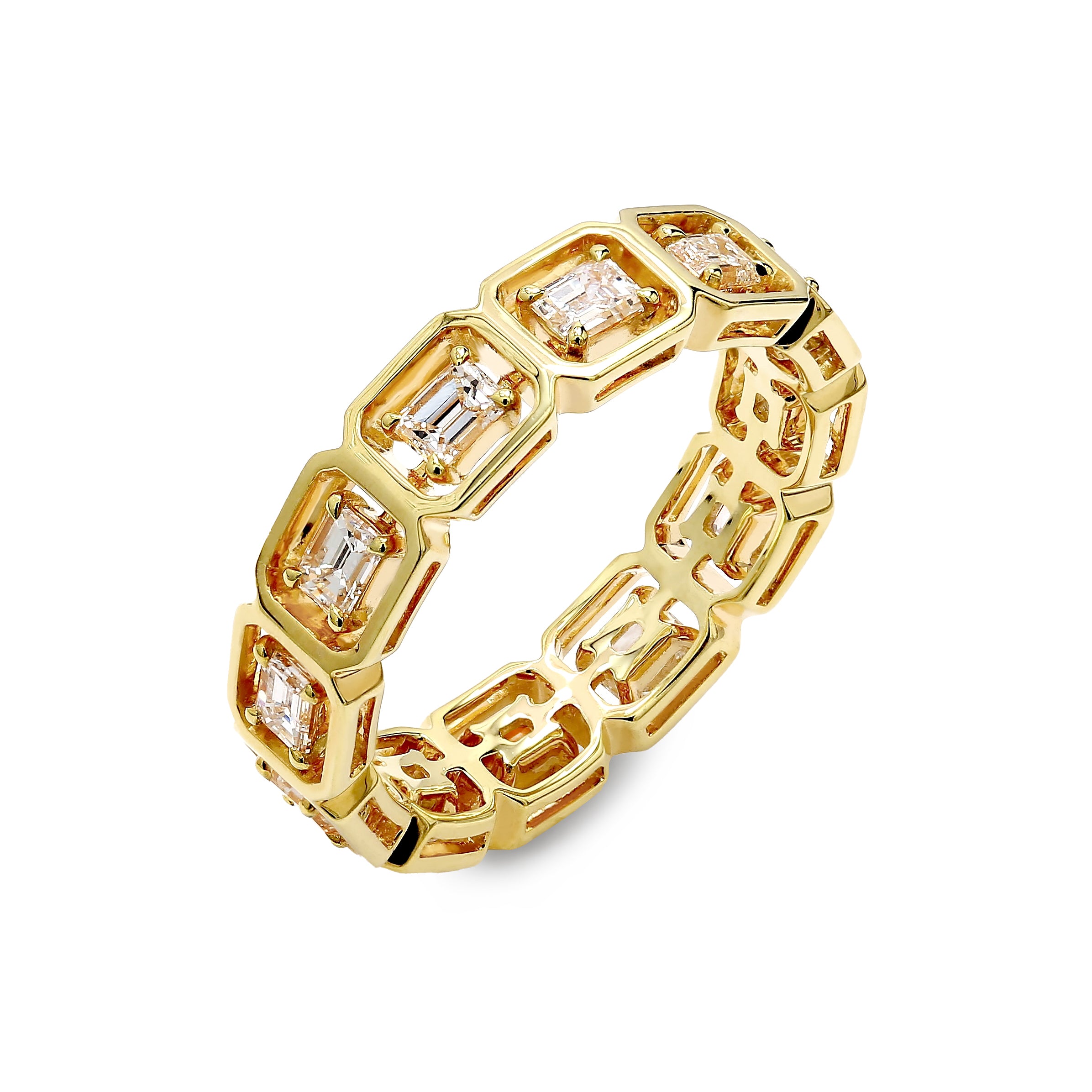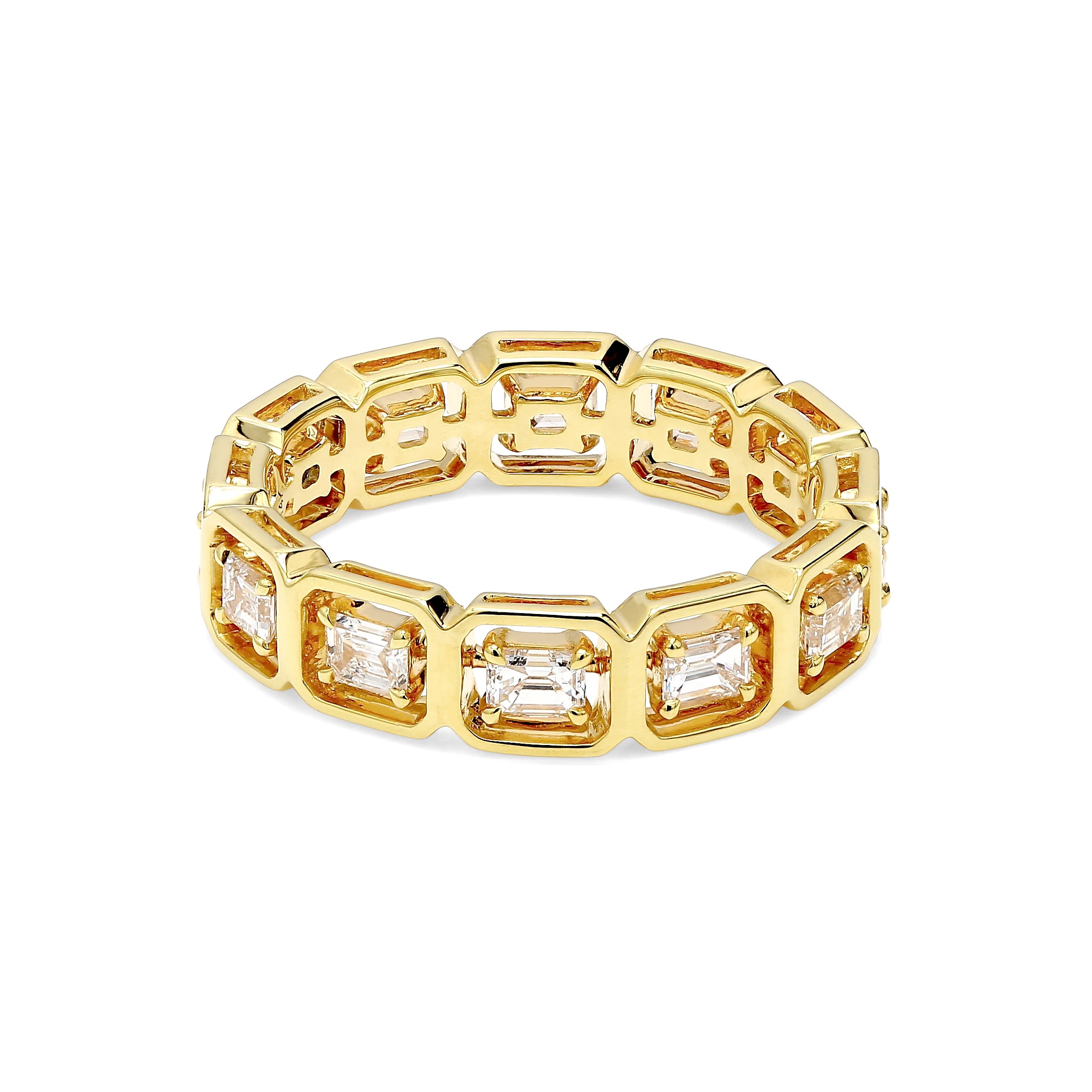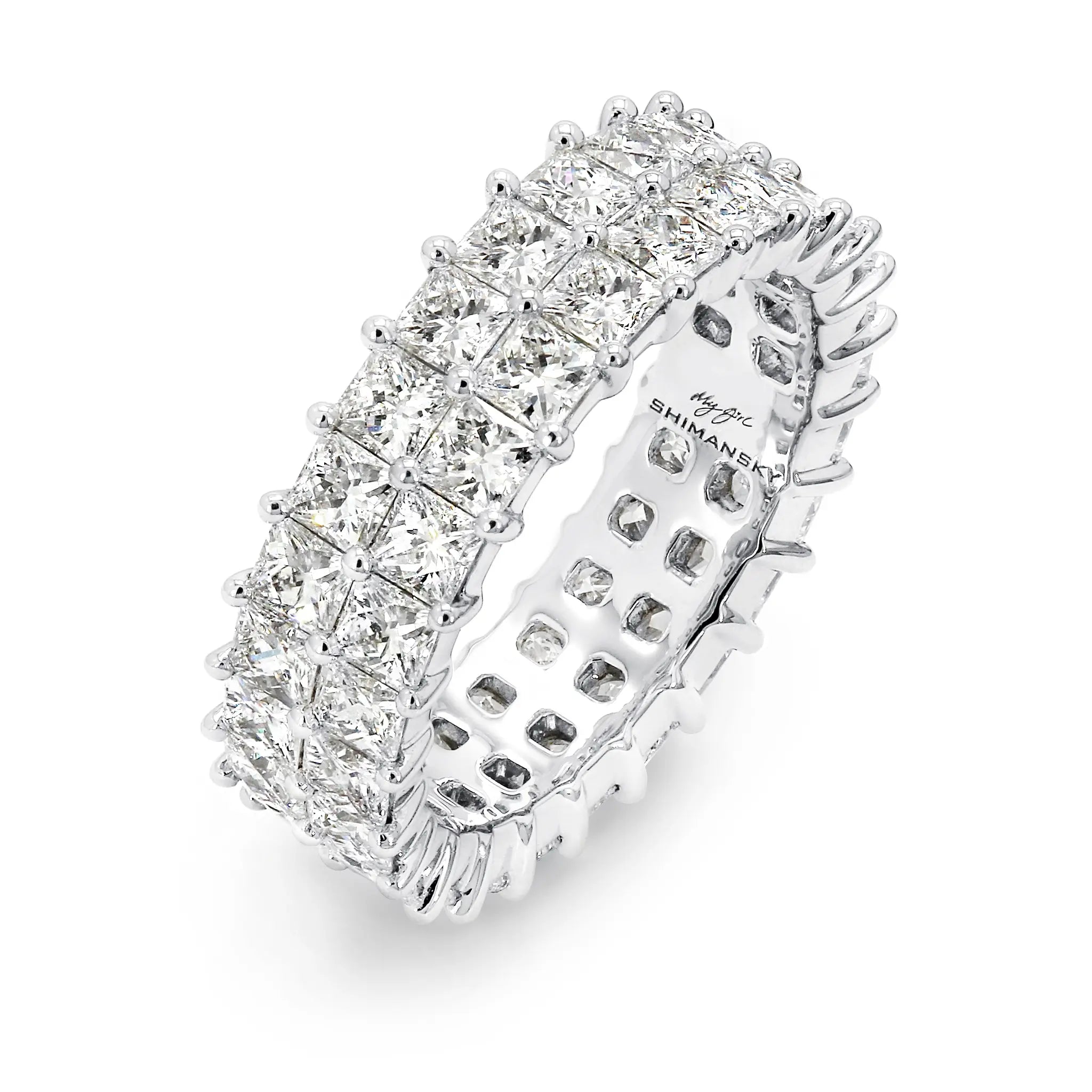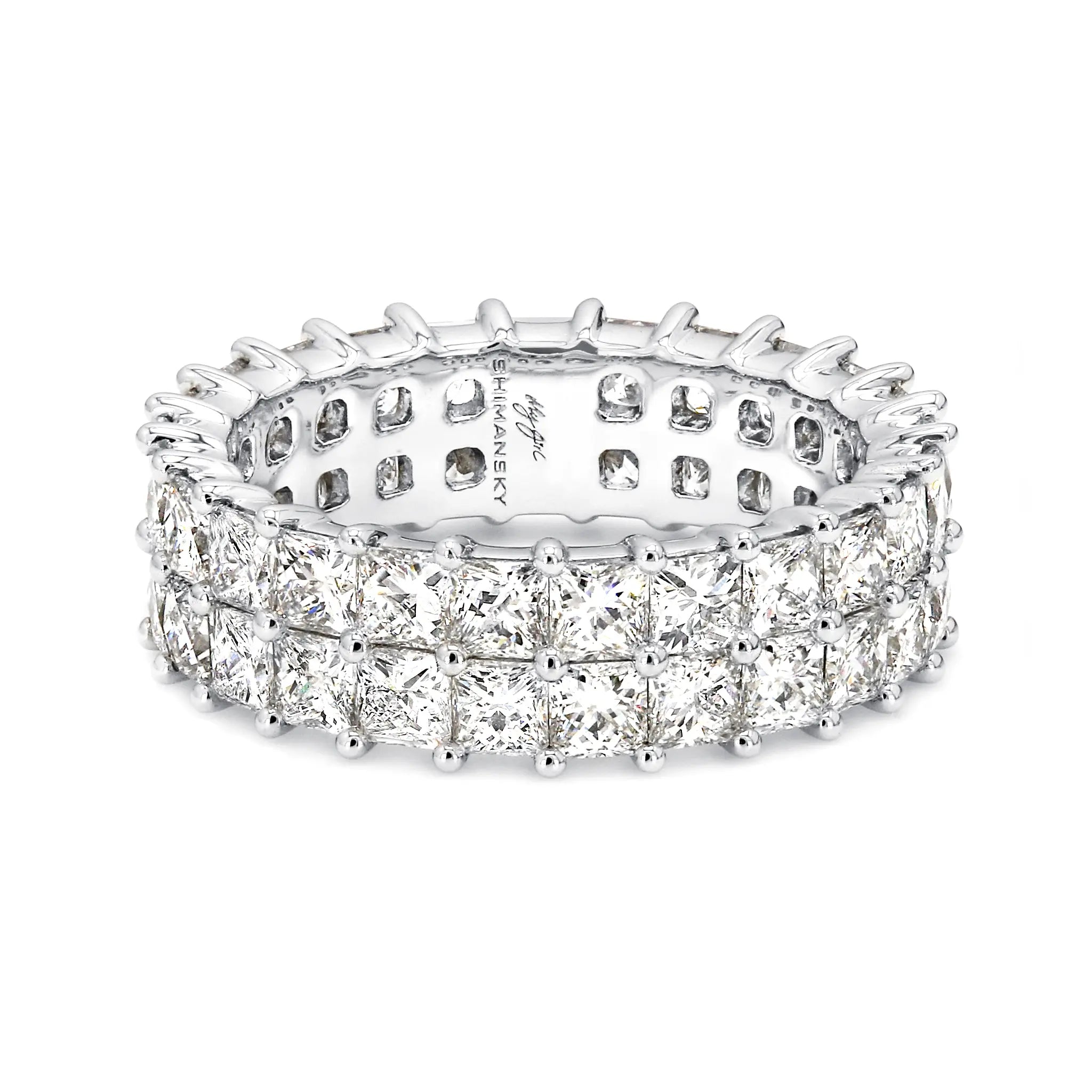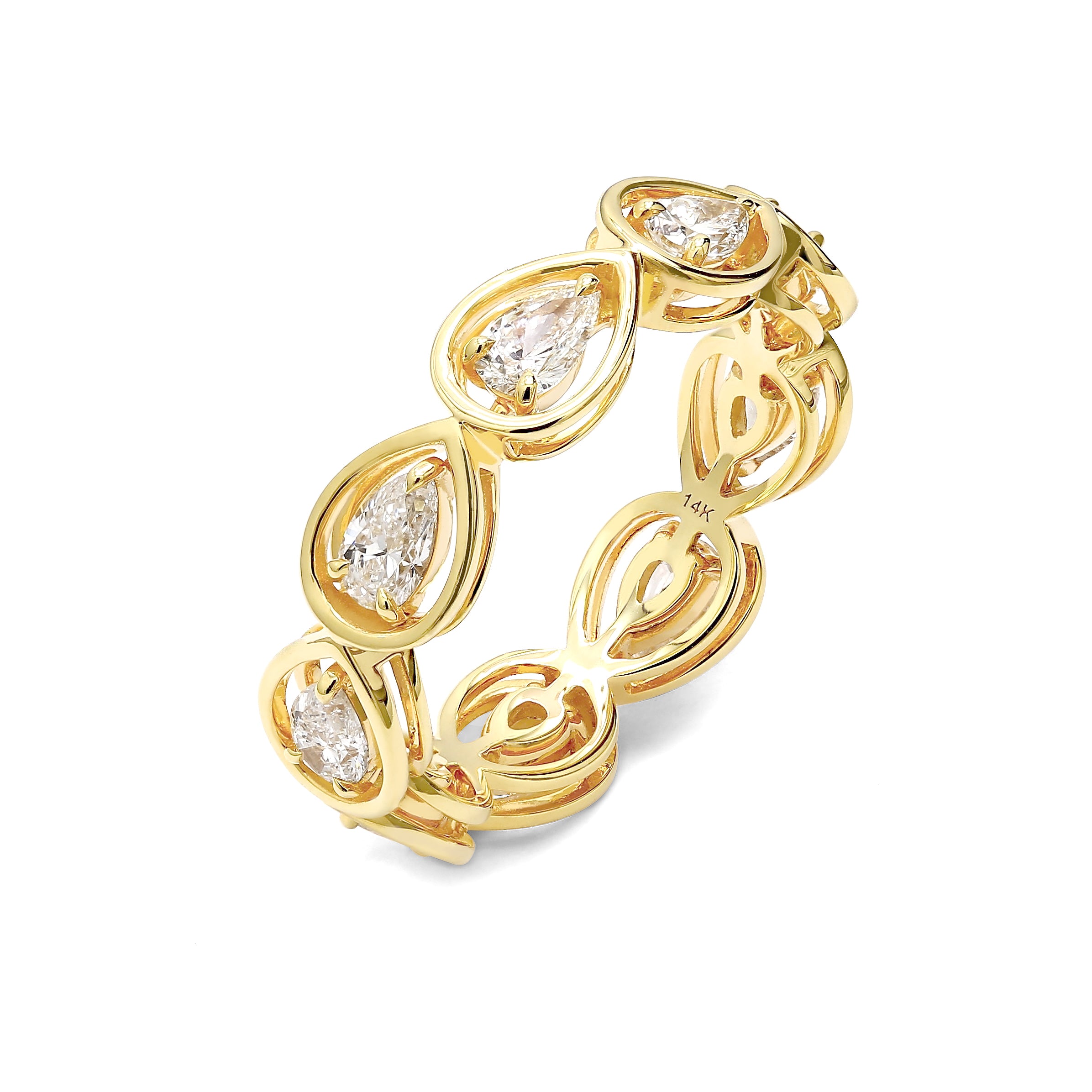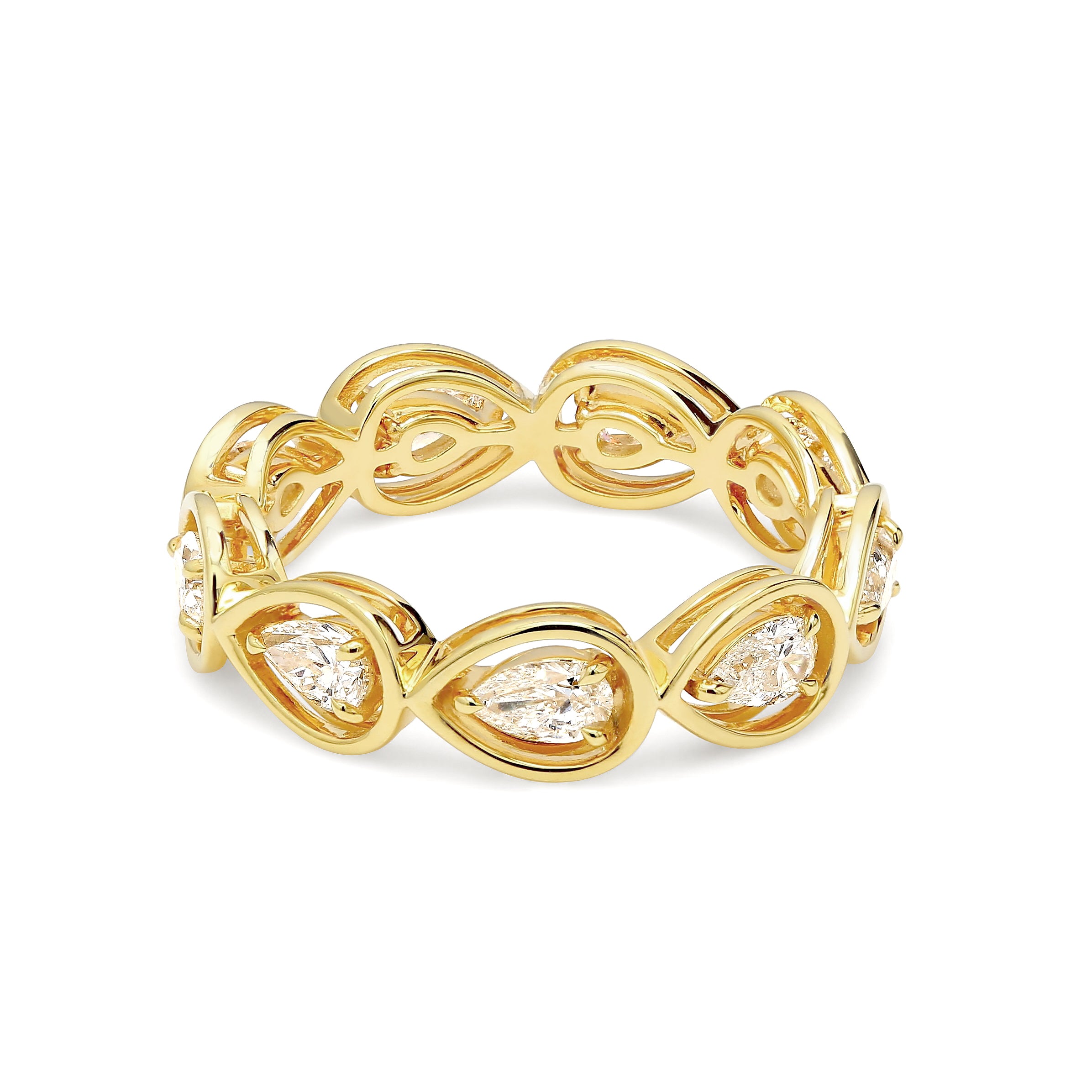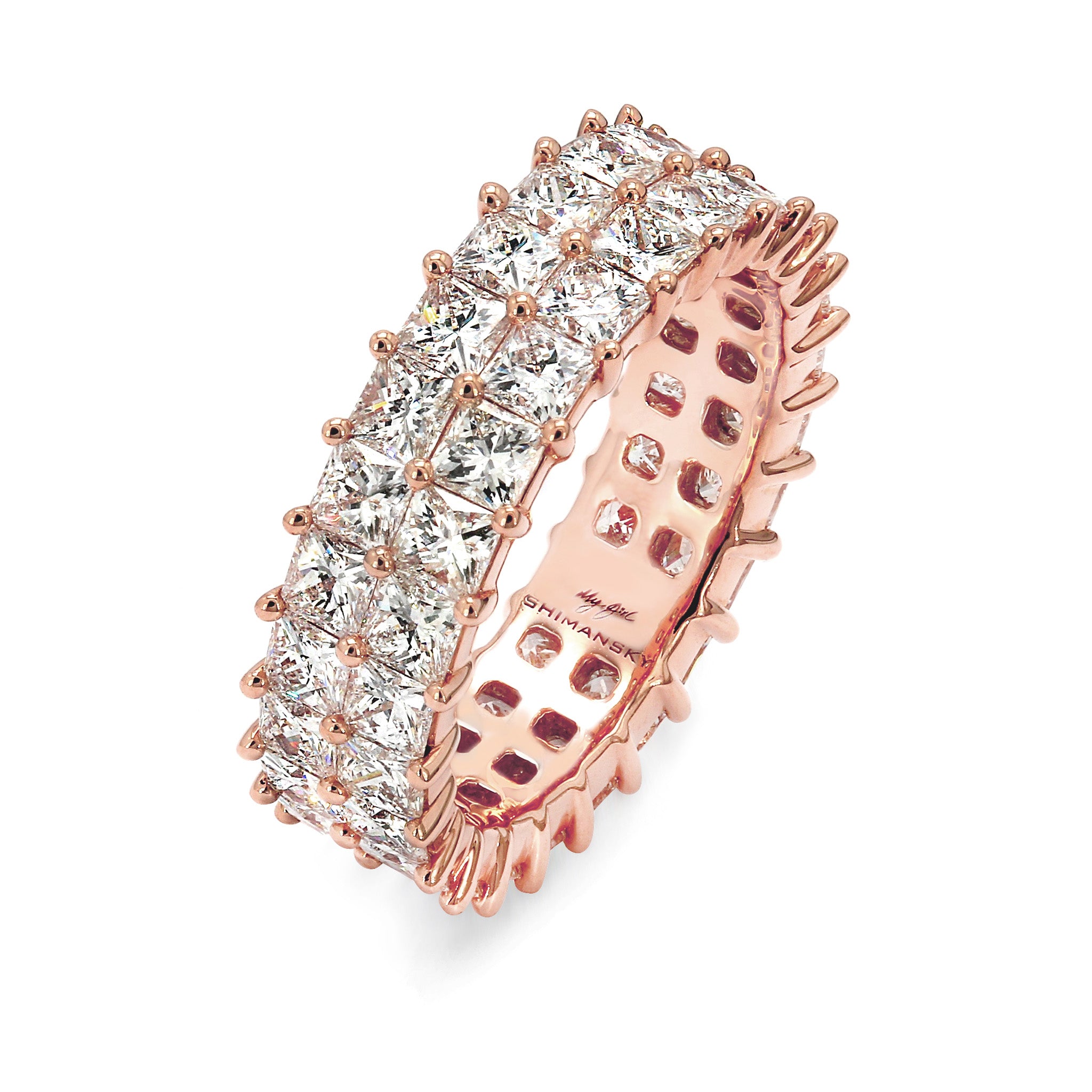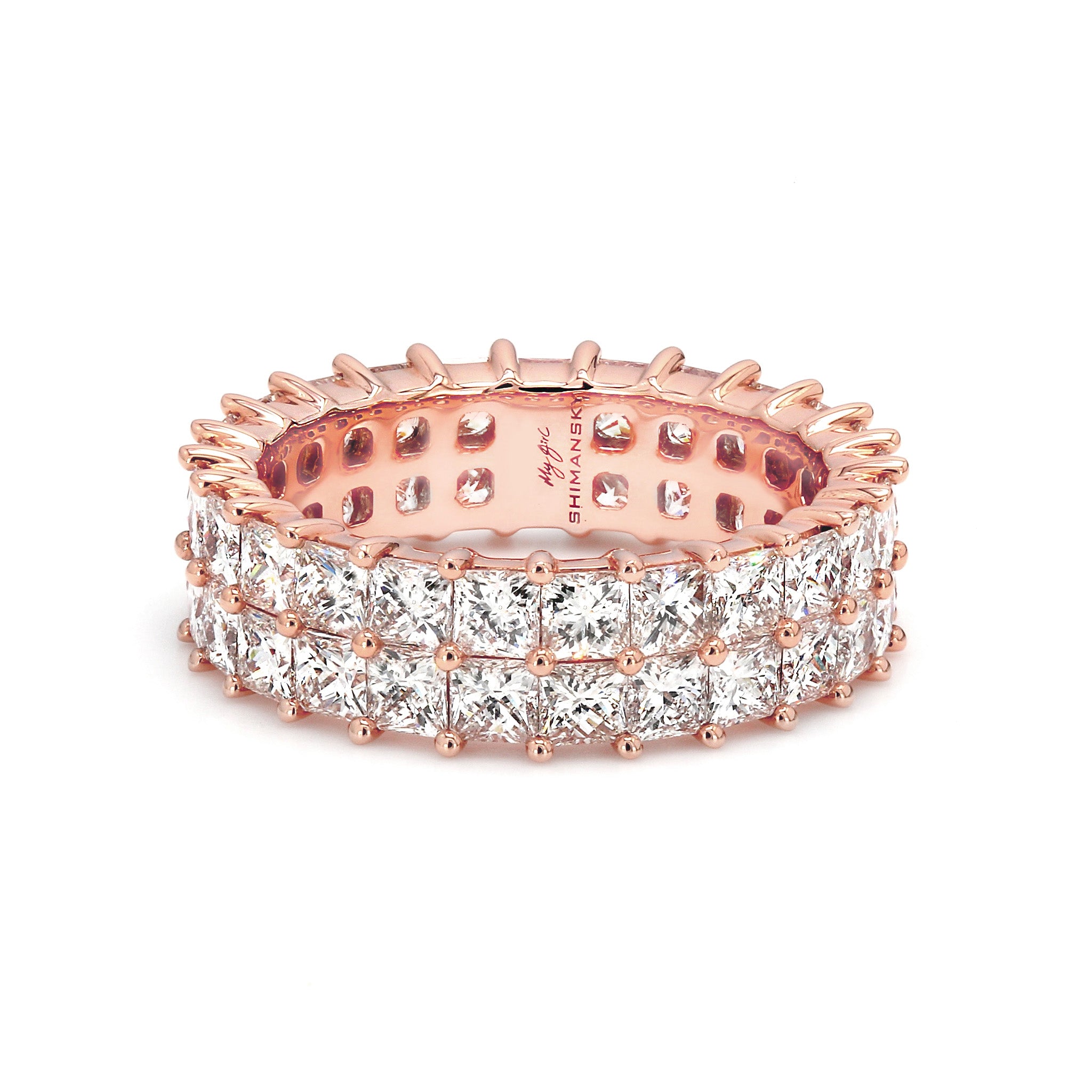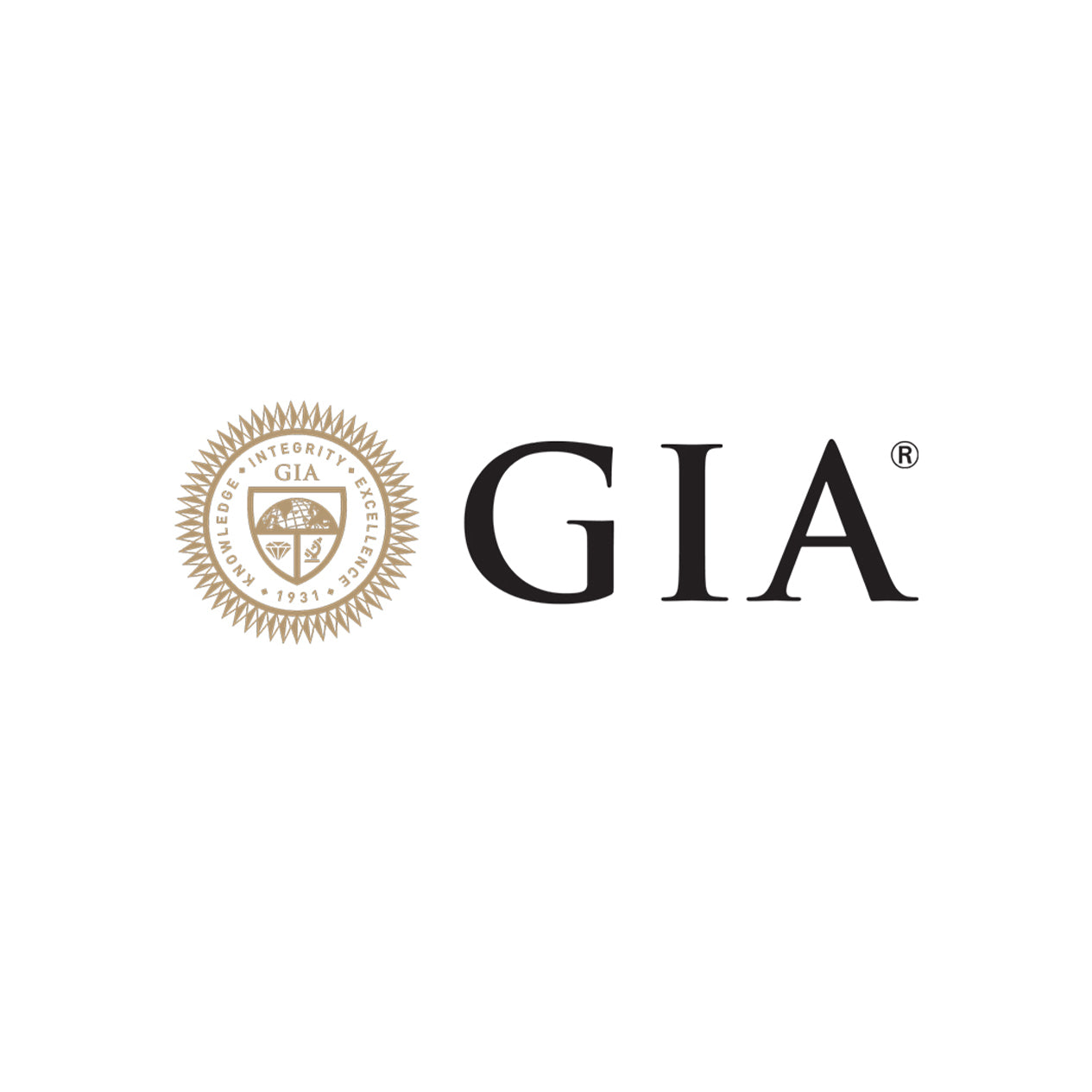
How to read a GIA diamond certificate
Each diamond is unique, with a range of characteristics that act as its “fingerprint.” These characteristics determine the diamond’s value, and are recorded on a diamond certificate.
The GIA Diamond Certificate is a formal document containing a diamond’s unique details. These details include the 4Cs (a diamond’s cut, clarity, colour and carat weight), the diamond’s finish (polish and symmetry), fluorescence, diagrams of the diamond’s proportions and additional comments.
The GIA Diamond Dossier also includes an assessment of the 4Cs and a microscopic laser inscription of the GIA report number, aiding identification. The Diamond Dossier is only for loose diamonds, D-Z colour, weighing 0.15 to 1.99 carats.
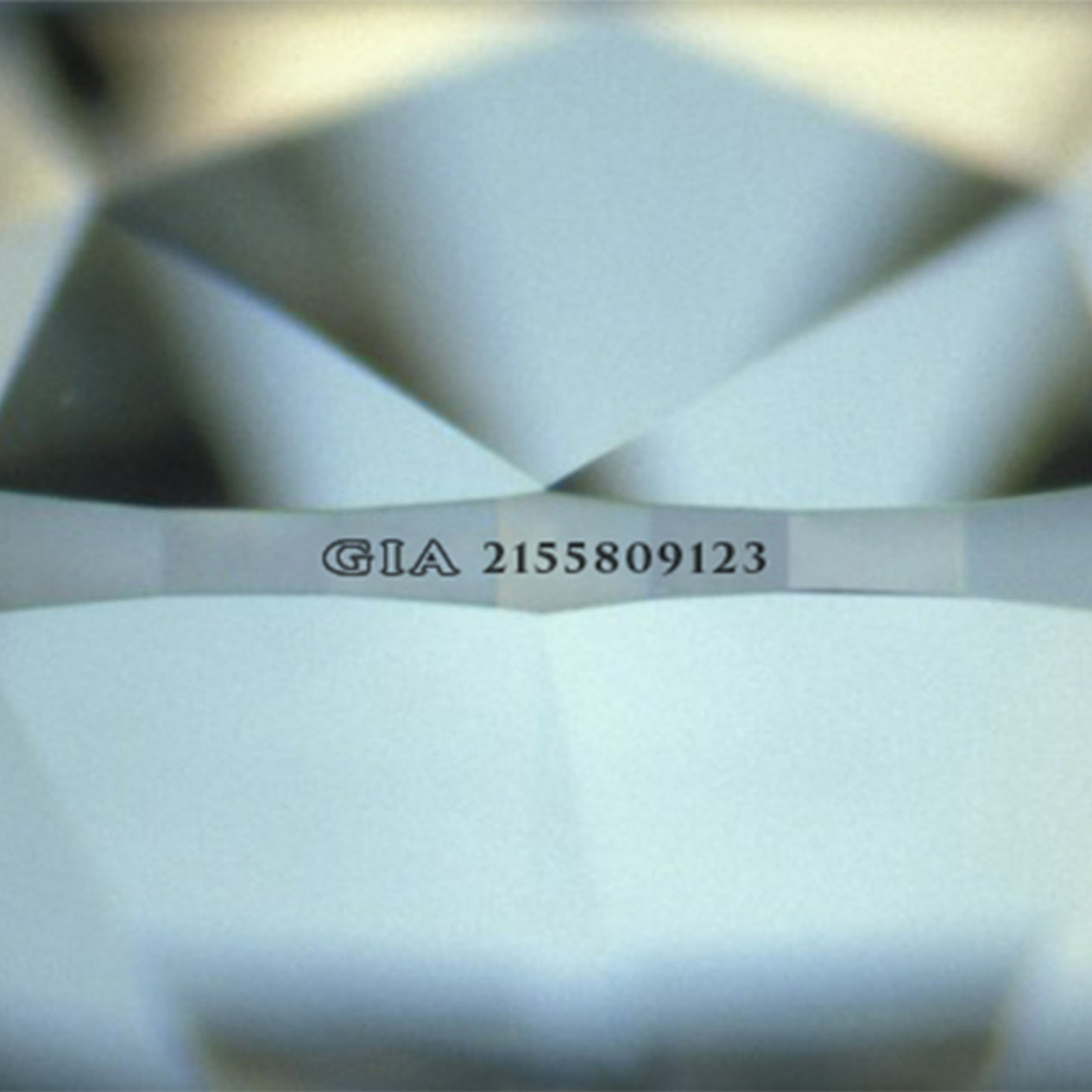
The GIA diamond reports serve as proof that the details on a diamond’s price ticket, are in fact true for that particular diamond. It protects the consumer from falling victim to a fraudulent purchase, and it protects the seller by establishing a diamond’s characteristics independently, thereby leaving no room for error on the seller’s side.
Though a diamond report outlines a diamond’s individual characteristics, it is not an appraisal, and does not suggest a monetary value. For insurance purposes, a separate valuation certificate will need to be issued. This is a written estimate of the retail replacement value of the diamond.
Though there are various reports on the market from a number of different grading laboratories, the GIA is recognised as the original source for unbiased grading, and has established a reputation for accuracy, reliability and integrity.
Though a GIA certificate contains a lot of information, it is presented in an uncomplicated fashion, and is easy to interpret.
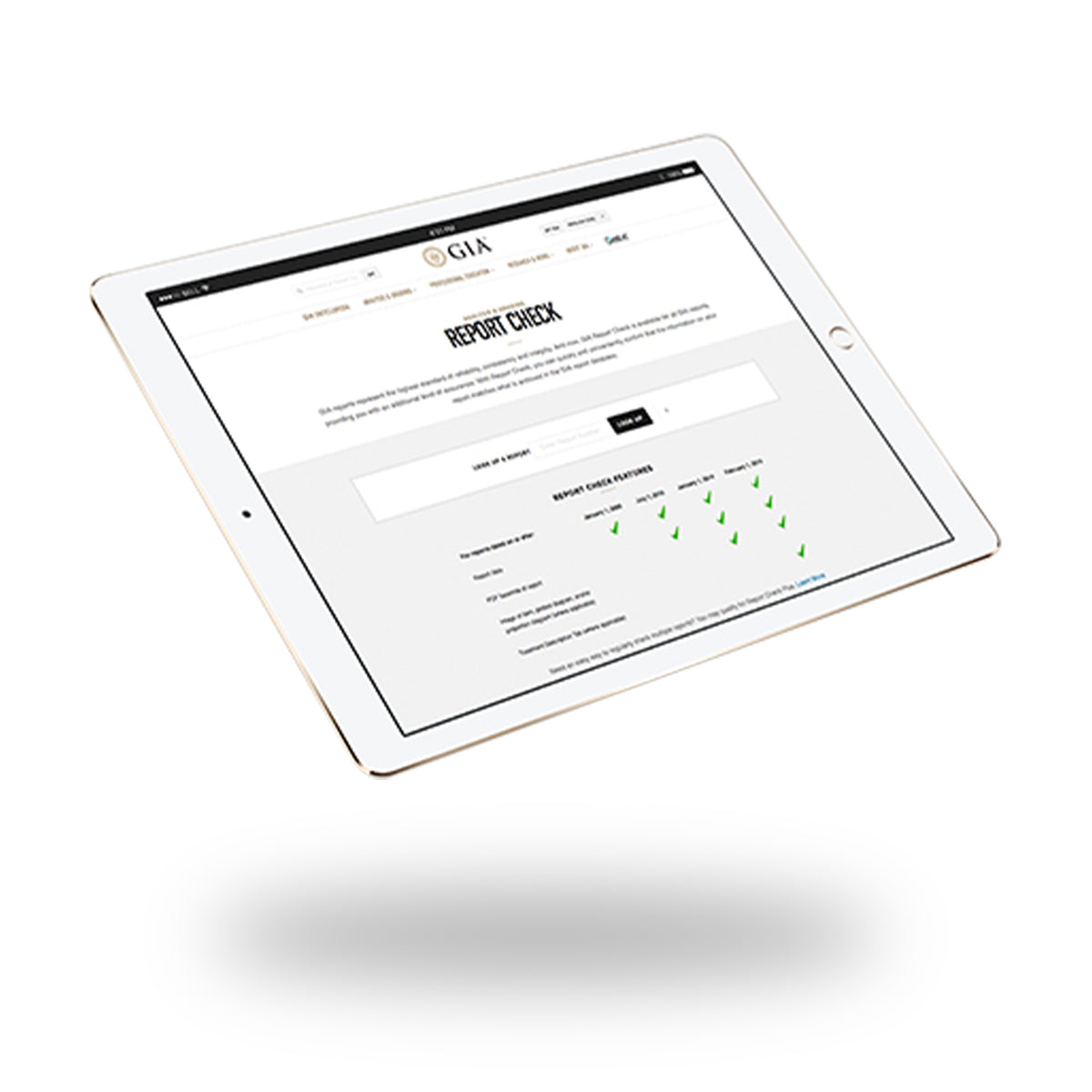
A GIA Diamond Certificate will contain the following information:
- A unique certificate number (e.g.: 1105994015)
- A description of the shape of the diamond (e.g.: Round Brilliant Cut)
- The carat weight of the diamond (e.g.: 0.50ct)
- The colour of the diamond (e.g.: E)
- The clarity of the diamond (e.g.: VS2)
- The length, width and depth of the diamond in millimeters (5.10 - 5.11 x 3.16 mm)
- A description of the cut grade (e.g.: Very Good)
- The quality of the diamond's polish (e.g.: Very Good)
- The quality of the diamond’s symmetry (e.g.: Excellent)
- The presence or absence of fluorescence in the diamond (e.g.: None)
- The total depth percentage and table percentage of the diamond (e.g.: 61.9% and 57% respectively)
- A description of the girdle's appearance (e.g.: Thin to Medium)
- A description of the culet (e.g.: None)
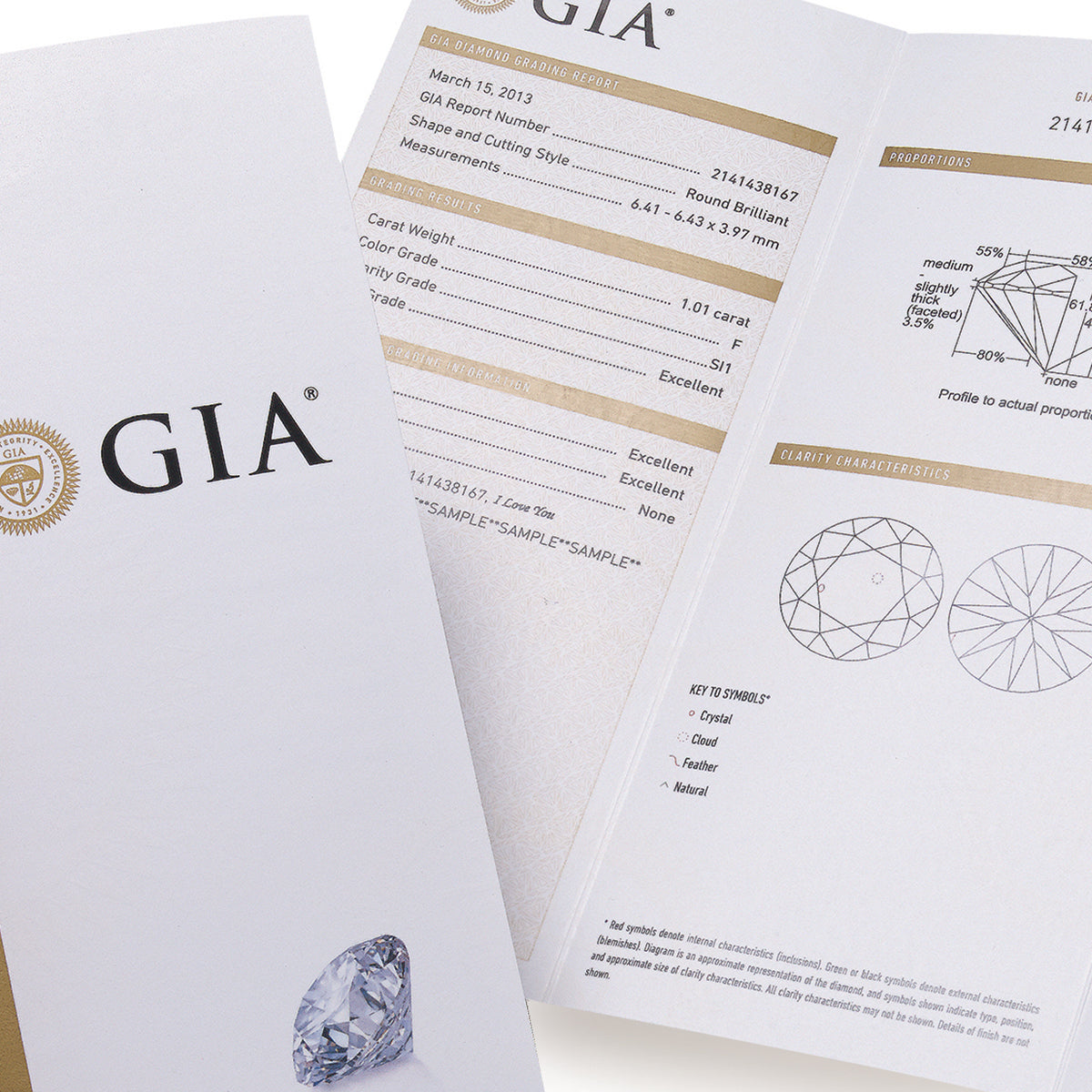
Some GIA certificates contain additional information such as:
- A diagram in which the clarity characteristics of the diamond are plotted.
This is in cases where the diamond has inclusions:
- Descriptions of the type of inclusions in the diamond
- Additional notes of interest
Like most official documents, all GIA reports have security features to prove their authenticity. These include a hologram, security screen and micro-print lines. These features prevent reports from being forged or duplicated.
The GIA set the standard for diamond grading and diamond certification, and today, almost all diamonds are graded using their methods, and following their certification processes.
Featured collection
ETERNITY RINGS
